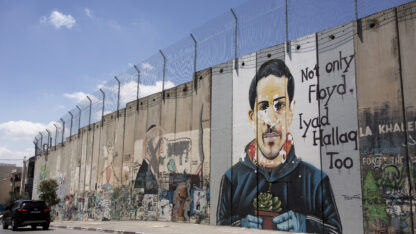Israel’s devastating air-and-ground assault on Gaza has now killed more than 20,000 people in the 10 weeks since the conflict began, according to Gaza’s Ministry of Health — a figure that is fast approaching 1% of the Palestinian territory’s pre-war population.
The ministry, in the Hamas-run Gaza Strip, said Friday that at least 20,057 people have died from the Israeli attacks since Oct. 7. It has said 70% of those killed are women and children.
Although the health ministry doesn’t differentiate between civilian and combatant deaths, it says the majority of those killed have been women and children. Another 50,000 people in Gaza have been wounded, the Hamas-controlled ministry says. International aid groups generally agree with its tallies.
A death toll of 20,000 in the enclave, where the population is estimated at roughly 2.1 million, means around 1 out of every 105 people has been killed since the war began.
As the death toll continues to rise, Israel faces growing international pressure to end the bombing of Gaza. Even the Biden administration, which has firmly backed Israel’s stated goal of crushing Hamas, has repeatedly admonished Prime Minister Benjamin Netanyahu’s government to minimize civilian casualties.
Lives shattered
Among those whose lives have been shattered by Israel’s bombardment is Yousef Es-Sakani. He sits on the edge of a planter under a tree in the center of Ramallah, a bustling, traffic-choked city in the Israeli-occupied West Bank and tries to make sense of Israeli airstrikes earlier this month in Gaza that suddenly added most of his family to the war’s staggering death toll.
In the early morning hours of Dec. 9, he says, his wife, four daughters and two of his sons were killed by Israeli airstrikes that flattened their four-story Gaza City apartment building. A third son only survived because he stayed with an aunt the night of the attack.
“One of the ones killed is my daughter, she had one semester left to graduate to become a doctor,” he says.
Of his two sons killed, the body of one remains buried under the rubble, says Es-Sakani, who wears a black baseball cap, a salt-and-pepper beard and an expression of weary stoicism.
Israel launched its offensive in Gaza in response to the Oct. 7 attack, when Hamas staged a lightning strike on southern Israel, killing 1,200 people, Israel says. The Islamist militant group also seized around 240 hostages, but freed more than a hundred of them during a week-long cease-fire at the end of November. At least 110 others remain in captivity, Israeli officials say.
At last count, Israel’s military says it has killed 7,000 Hamas fighters. It remains unclear, however, whether that figure includes an estimated 1,000 militants Israel says were killed inside its border during the Oct. 7 attack.
People who have followed past wars in Gaza say the Gaza Ministry of Health’s numbers are reliable. The ministry has traditionally used a digitized system to gather the names, ages and gender of the dead from hospitals and morgues.
Even so, it has become increasingly difficult to keep an accurate count amid frequent communications blackouts in Gaza and attacks on hospitals, which Israeli says are harboring Hamas fighters and command posts. With much of Gaza now reduced to rubble, thousands, like Es-Sakani’s son, lie uncounted under tons of concrete and twisted rebar.
“Any numbers you hear are unfortunately an undercount because we don’t know how many bodies are underneath the rubble,” says Sari Bashi, who works in Ramallah and serves as the program director for Human Rights Watch in charge of global research. “And the [Gaza] civil Defense Force does not have equipment and many areas are unreachable.”
Pressure on Israel to switch tactics
The U.S. wants Israel to shift to lower intensity combat, sending in special forces teams to root out Hamas rather than targeting the Islamist militant group with airplanes and tanks. Many Israelis have also pushed their government toward another cease-fire to secure the release of the remaining hostages.
But a retired Israeli brigadier general, Shlomo Brom, said it is difficult for troops to avoid civilian casualties when Hamas is embedded in mosques, schools and hospitals, as the Israelis claim.
Brom also says Hamas believes the growing death toll in Gaza is undermining support for Israel’s war effort.
“Not only they don’t care about their populations, they’re seeing the casualties contribute to their cause,” he said. “Because that’s OK if they can mobilize the media [and] public opinion.”
Meanwhile, for weeks, international aid groups have been warning of a growing humanitarian crisis in Gaza, with food, water and fuel and critical levels. The U.N. World Food Program, warned Monday that “Gazans are becoming more desperate by the day, with nowhere to go and nothing to eat.”
NPR’s Frank Langfitt reported from Ramallah, in the Israeli-occupied West Bank. NPR’s Scott Neuman reported from Tel Aviv. NPR producer Anas Baba contributed from Rafah, in the Gaza Strip.
Copyright 2023 NPR. To see more, visit https://www.npr.org.
9(MDAxODM0MDY4MDEyMTY4NDA3MzI3YjkzMw004))

9(MDAxODM0MDY4MDEyMTY4NDA3MzI3YjkzMw004))








